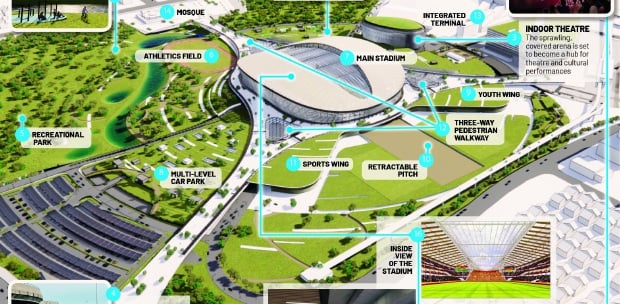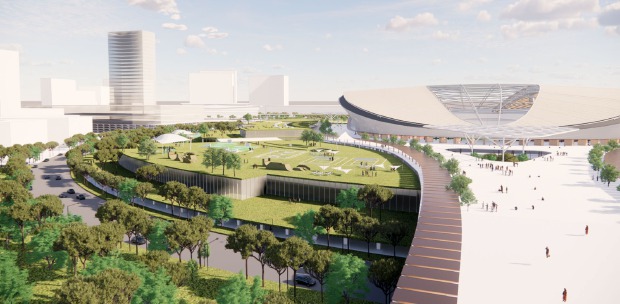KUALA LUMPUR: The decision to build a new Kompleks Sukan Shah Alam (KSSA) instead of renovating the 30-year-old Shah Alam Stadium promises a fresh chapter for Shah Alam and beyond, offering state-of-the-art facilities not just for athletes and sports fans, but also the wider community.
Selangor Menteri Besar Incorporated group chief executive officer Saipolyazan M. Yusof said the KSSA would be a revitalised hub for both local and international events, with recreational spaces for all ages, ensuring long-term economic and social benefits.
Addressing criticisms over the decision for a full-scale development instead of renovating or refurbishing the old stadium, he explained that constructing a new structure would be more practical and economical due to the old stadium's severe dilapidation and the extensive, costly repairs it would require.
"Apart from the stadium's roof, the electrical and mechanical systems are beyond economical repair, particularly after the severe floods of late 2021.
"Maintenance costs would surpass the expense of purchasing new equipment, which we will replace with more energy-efficient ones.
"While the initial investment (to build a new complex) is more expensive, we would be reducing the cost in the long term," he said in a recent interview with the New Straits Times.
The demolition of the Shah Alam Stadium began on Monday after being granted approval by the Shah Alam City Council, paving way for the development of the new KSSA project.
Its construction is divided into three phases, with phase one involving the building of a new main stadium, an outdoor sports area, a parking plaza, and the integrated transportation terminal.
This is estimated to be completed by 2026.
The second phase would focus on developing commercial and cultural facilities, including a sports wing, a youth wing, a theatre, retail outlets, and a recreational area. The final phase would add further infrastructure including a hotel.
When fully completed in 2029, KSSA's centrepiece would be an ultra-modern stadium with cutting-edge facilities such as a covered and transparent roof, ample retail spaces, a vast concourse, temperature regulated seats for the comfort of fans.
It would also have a separate walkways and entrances for home and away fans for greater security, and will use energy-efficient equipment and technology.
A key feature for the new stadium is the multi-use retractable pitch, the first of its kind in Southeast Asia.
This would ease pitch maintenance and allow other sporting activities and even performances to be held in the stadium without affecting the pitch.
Meanwhile, Saipolyazan said while he understood the sentimental value the old stadium held, building a new venue with a smaller capacity would be more sustainable in the long run.
"We understand that the Shah Alam Stadium was an iconic structure when it was completed in 1994, and we understand the people's sentiments wanting the building to be maintained.
"But from a development perspective, we would also need to look at the commercial and sustainability aspects," he added.
The current Shah Alam stadium has a capacity of 80,372. Saipolyazan said a capacity of between 40,000 and 45,000 would be ideal for a modern audience.
He added that the aim of the KSSA was to ensure that it could sustain itself financially.
"We can build a new stadium with a smaller capacity, and support income-generation via other elements such as a multi-use retractable pitch, retail outlets, and a theatre for arts and entertainment activities.
"We've conducted a thorough study. Our plan is to ensure the stadium remains sustainable."






